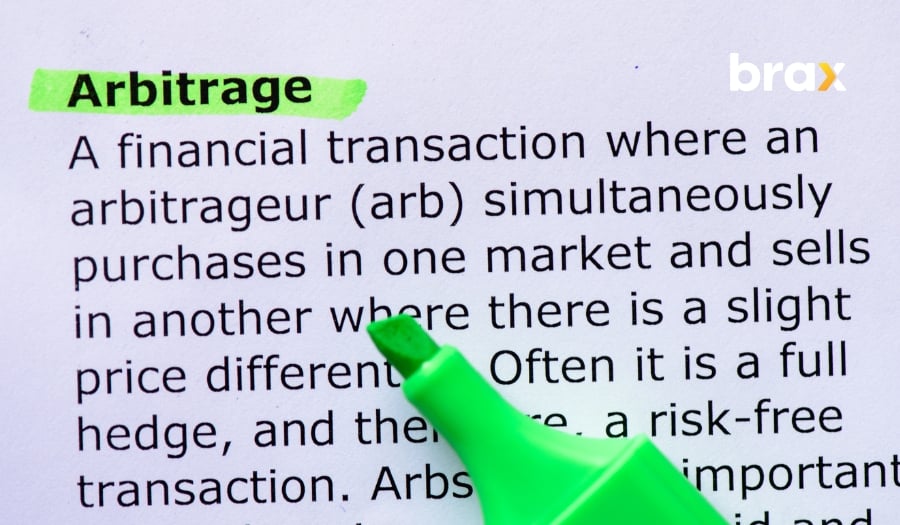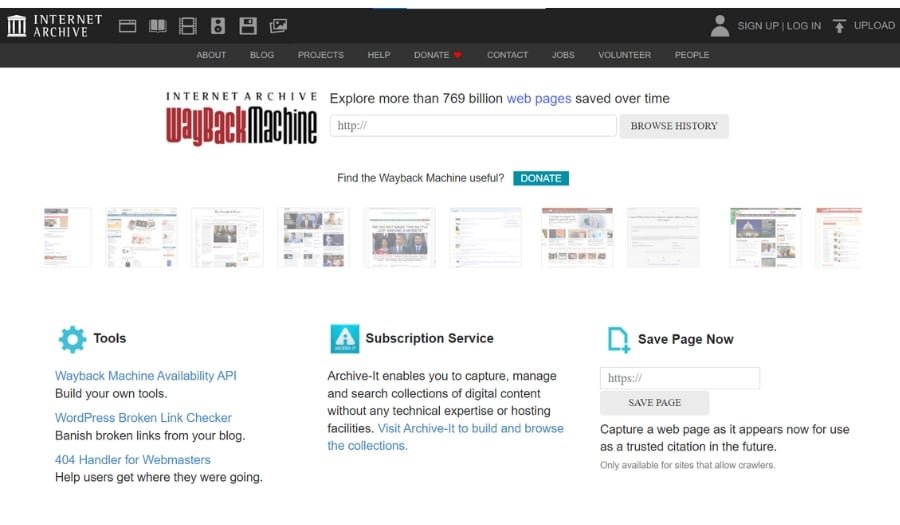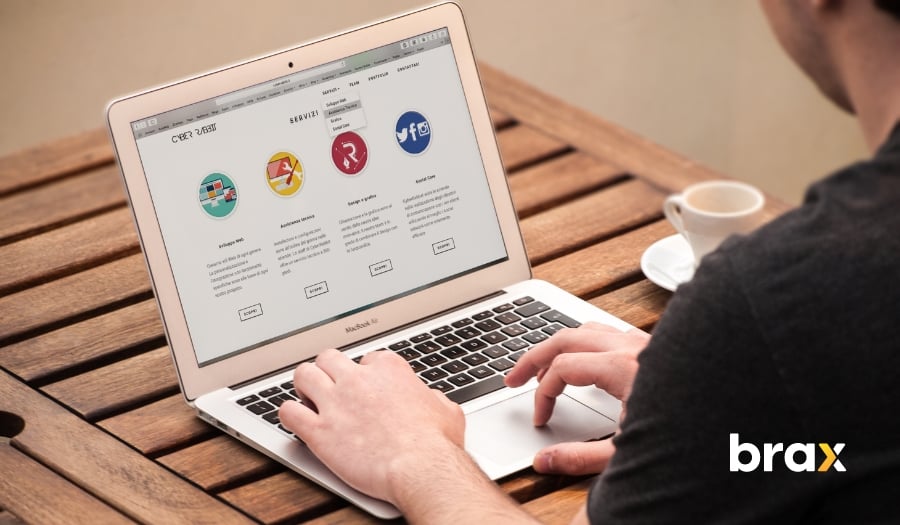Blogging can be a complicated endeavor, especially when it comes to generating profit. You spend hours and hours curating content, creating graphics, networking with other bloggers and managing your social media accounts but all the effort is ultimately pointless if you're not getting any returns.

Ads can be a great way to generate income from your blog, but it's disheartening when all your hard work isn't reflected in the ad revenue you're pulling in. Even if it means making smaller steps at first, take heart from the fact that there are ways you can earn more from your blog, one of which is through Ad Arbitration.
Ad arbitration is a great way to get traffic to your blog without having to do any extra work. By buying traffic through an ad network and then sending that traffic to your blog, you can see a big increase in readership quickly and easily.
Native ads and ad arbitration, when combined, can become one of the most powerful options for making money online today. But what are they?
What are Native Ads?
Native advertising, or native ad, is a type of online advertising that aims to blend seamlessly with the surrounding content. It's typically presented as sponsored content and appears like any other item on the page — except for the 'sponsored' label.
Websites often use native ads to monetize their content or advertisers to draw attention to their products. It’s very noticeable in websites with shareable content like ViralNova and UpWorthy. These ads don't disrupt the user experience and can be beneficial if they link to relevant content or offer an interesting perspective on the topics being discussed.
What truly sets native ads apart from traditional display ads is their ability to meld into the background — viewers may not even realize they see an ad. This makes them a great way for marketers to communicate their message without alienating potential customers who are put off by intrusive, disruptive ads.
In short, native ads offer advertisers a better way to reach potential customers without sacrificing user experience.
What is Ad Arbitrage?
Ad arbitrage is a term for when somebody makes more money from ads by purchasing website traffic. So, people with blogs about dating or cars or about anything at all can make money from their writing by embedding native ads or displaying display ads.

Let us elaborate.
By putting advertisements on your website from prominent advertisers such as Google Adsense, Revcontent, or Outbrain, you are monetizing your website by allowing the viewers to click on the ads placed on your page.
But organic traffic can only bring you so far. To make the most of your website, you need to buy traffic to ensure that the viewers will click on the advertisements that you are displaying. This is where ad arbitrage becomes very useful.
Always remember to purchase traffic lower than what the advertisers will give you. This is the secret in successful ad arbitration. We will discuss this in more detail in a short while.
What You Need To Get Started With Native Ad Arbitrage
Combining what we’ve discussed above, the native ad arbitrage model involves purchasing cheap traffic from one source and then serving the same traffic on another channel that contains native ads, but with a higher margin. Native advertising forms relationships between brands and consumers by delivering relevant content to the user.
Getting started in native ad arbitrage isn't as daunting as it seems — all you need is some basic knowledge of the market and platforms you wish to target.
Let’s start from the very beginning and discuss the most basic steps you need to take.
1. Creating a Website
For those looking to get their feet wet in native ad arbitrage, setting up a website can seem daunting. However, it's quite straightforward.
Here are the primary steps in creating a blog or a website:
Choose an impressive domain name.
The domain name is the address that links directly to your website. Make sure it's easy to remember so that potential customers will have no trouble finding you online.
When it comes to creating a strong domain name, the Wayback Machine has your back. An innovative online service, this clever tool’s mission is to provide technology that allows users to access archives of the web, thereby making the internet a more user-friendly realm.
With this in mind, Wayback Machine offers an easy way to create a unique and memorable domain name — perfect for entrepreneurs or anyone in search of a winning online presence. A quick search on its repository is sure to help you find the custom moniker that you’re after, making this reliable service one of your go-to resources out there on the web.

By using the Wayback Machine, you can get a glimpse into different versions of the internet, enabling you to see past websites that may have previously used your desired domain name and overall find inspiration for new ones. This feature also makes it easier to ensure that your desired website title does not have a bad reputation online, especially with search engines such as Google, else your ranking will not be able to rise.
With this invaluable tool in hand, crafting a memorable, eye-catching domain name is within reach!
Find a hosting provider.
Once the domain name’s taken care of, it's time for hosting. Hosting provides storage and access support for your site — choose this carefully, too, as many companies offer various price plans and features.
Choose a website-building platform.
This is where you put together everything that makes up your site — from designing its layout and structure to adding content and images.
Maintenance and mobile responsiveness are key elements here: websites must be kept up-to-date to look good and function properly on desktop and mobile devices. This is where you will find the usefulness of WordPress.

Set up analytics or tracking.
Finally, set yourself up with an analytics tool like Google Analytics — this way, you can track your visitors' behavior across time and adjust accordingly to improve user experience on the site and increase conversion rates.
2. Content Research and Creation
Content research and creation are becoming more important for businesses looking to edge out their competition in today's digital world. This is especially true when it comes to native ad arbitrage, which involves creating content people are more likely to consume, engage with, and share.
With this strategy, it's essential to understand your audience and the topics they find most interesting – otherwise, the content you produce won't resonate with them. It would be best if you researched your target audience to get an edge over the competition. Dive deep into what topics they like best and how they consume information – after all, your goal with native ad arbitrage is to deliver relevant content at the right time to increase click-thru rates on the recommended ads.
You may also want to analyze what media types perform best for feed-based traffic sources and evaluate organic reach in terms of demographic engagement. With such research, you can start optimizing your creatives in images, videos, gifs, etc.
Try investing extra effort into researching user circles before producing any content. This is so that while building something unique, attention is kept from other components leading away from the main objective at hand: creating share-worthy content and encouraging viewers to click on native ads on your website!
3. Signing Up as a Publisher
If you have an interesting blog or website with quality content, then you may be able to make some money out of it! As a publisher, you can produce captivating content that relates to the products and services you promote. You can then monetize this content by utilizing pay-per-click ads. The ads generate revenue every time someone views or clicks on them, so the more traffic your site generates, the better your chances of making a decent side income from blogging or web publishing.

There are a few simple steps you'll need to take to become a publisher. Signing up with a reputable network such as Outbrain, Revcontent, MGID, Taboola, and other native ad platforms is one of them.
But you have to know that these platforms have different requirements.
Outbrain
Outbrain is a native advertising platform that gives publishers access to DSPs via programmatic native ad demand. Some of Outbrain's top publishers include BBC and The Guardian.
To become an Outbrain publisher, you will need to have a content website or blog that meets certain requirements, such as a minimum of 10 million monthly views. However, if Outbrain has determined that you have quality content, you can join their platform even if you only have as low as 3 million monthly pageviews.
Revcontent
Revcontent is another excellent platform to improve your content marketing and native advertising. They use lightweight and customizable technology, making it easy for publishers to achieve their goals.
To become a publisher, Revcontent requires a minimum of 50,000 to 80,000 unique visitors per month, unless your application is special or otherwise deemed newsworthy in its entirety by Revcontent's team.
In addition, the contents of your websites must be published in English and must adhere to general advertising guidelines, including proper website design, spelling & grammar proficiency. These two quality standards ensure your work aligns with their approach and spirit of delivering native advertising.
MGID
MGID is only available to websites that have a minimum of 3,000 unique daily visitors and 90,000 unique monthly website visitors. Your website should also have a secure HTTPS protocol. Your site should be approved before any setup can begin, but MGID guarantees that the approval process will take no longer than 24 hours.
This platform’s pricing models are RevShare, CPC (Cost per click), and CPM (Cost per mille). Their withdrawal threshold is $100.
Taboola
Taboola is another respectable platform for bringing in page views and traffic. USA Today and Huffington Post both use Taboola as their native ad platform. To become a publisher, you need to have at least 1 million views on your website. Taboola also lets you choose modern advertising techniques, such as geo-targeting, to increase your ad’s efficiency.
4. Buying Traffic
When it comes to finding an ad network to buy traffic from for your native ad arbitrage business, you have plenty of options. The truth is, not all of them offer the same advantages. To make sure you're getting your money's worth, it's important that you do your research and compare different networks available.

Start by looking into each network's website to find out if they provide enough traffic for your needs and the type of CTR (Click-through Rate) you expect. Also, consider their user base and see if it aligns with the audience you want to target. Making sure it fits with your budget is a must as well. By doing this homework, you'll prevent yourself from signing up blindly with an unsuitable network, which might bring more headaches than profit in the long run!
Once you've found a source, it's time to start creating and running campaigns with them. This can involve optimizing what you're offering for it to get as much attention as possible, such as using attractive visuals and engaging copywriting. After your campaign runs, tracking your progress is incredibly important to ensure you're getting the most bang for your buck. This means checking click-through rates and CPC or CPM.
Native ad arbitrage isn't just limited to blogs and publishing websites either. Many brick-and-mortar businesses have started seeing great returns from using this technique too! Companies are beginning to branch out from just relying on traditional search engine optimization tactics and instead capitalizing on social media advertising and native advertising.
By reaching potential customers when they are in the mood to purchase something new, these companies are quickly gaining huge ROIs from their efforts. Also, unlike SEO which sometimes takes months before results manifest themselves, purchased traffic usually delivers instant gratification!
5. Campaign Monitoring and Optimization
Ad arbitrage can be a tricky business, and the potential to earn money from it is enormous. That's why campaign monitoring and optimization of your ads is so essential; it ensures you are getting the maximum ROI from your arbitrage campaigns. According to industry experts, when you continually monitor and optimize your campaigns, you'll remain at the top of your game and maximize profits no matter what changes are happening in the marketplace.
When correctly monitored, you will always be in the best possible position to lower costs productively and increase profit margins for each ad campaign making ad arbitrage both an exciting venture with great rewards as well as a secure one where your chances of success are maximized.

Effective campaign monitoring requires identifying the most effective opportunities (and risks) within your market by gathering data about where bids are happening, trends or insights in viewing and engagement behavior, average cost-per-click for buying traffic, etc.
When armed with this intel, you better understand opportunities to apply strategic investments in digital campaigns. Once these opportunities have been identified and the necessary tracking systems established — you free up time to optimize.
Optimization can be done manually — allowing for real-time adjustments based on market changes or performance nuances. Or you can automate it through sophisticated algorithms that identify patterns and take various testing configurations into account at scale. At this point, you need to use an effective ads management platform to help you spend your money wisely. If you are buying native ads to send traffic to your website, then a native ads management platform like Brax could be of great use to you.
Brax is a platform designed to make it easy to manage bulk native advertising campaigns, report on results, and optimize for goals across multiple sources. Brax integrates with Yahoo Gemini, Outbrain, Taboola, Revcontent, and others to streamline content syndication. It also supports social media advertising
If you want to run a successful native ads arbitrage, Brax is the necessary platform to ensure your victory in this business. Click here to book a free demo and see how it works.
6. Scale! Scale! Scale!
Scaling your ads arbitration process should be of utmost importance if you want to grow your digital publishing website. Earning more money is one of the best reasons, but there are also other advantages to growing your website further. With scale comes the opportunity to optimize your performance, increase revenue streams and maximize profits.
You can also benefit from running multiple campaigns through ad networks at the same time while still leveraging rigorous standards of quality control. To drive your business in a successful manner, take a step-by-step approach and create an automated system that allows you to manage campaigns efficiently with minimal manual effort.

By doing so, you will be able to achieve scalability as you expand across different creative sizes and content categories without losing track of essential information or overlooking key details like CPC or CPM rates.
The strategy involves plenty of risks that you must keep in mind; however, if you keep track of what works and make adjustments in native ad arbitrage, you can increase revenue with minimal costs! Whether you're a startup or an industry leader, these steps are essential if you want to succeed.
Wrapping Up
Native ad arbitrage can be an attractive and lucrative way to make money from digital display ads. At its core, native ad arbitrage uses different affiliate networks to buy discounted ad inventory and sell it for a premium price. While this type of arbitrage has become increasingly popular in recent years, it can still be notoriously difficult to take advantage of — especially if you need to become more familiar with the inner workings of the online advertising landscape.
The key to success with native ad arbitrage lies in understanding the various types of digital display ads out there and their associated pricing models. Every ad requires a different strategy to ensure you stay undercharged or lose money on any deals, from video ads and banner impressions to pop-ups and sponsored content.
It also pays to have some proficiency with programmatic bidding platforms and data analysis tools; these solutions can help you track current market rates for different kinds of digital ads quickly and accurately.
Finally, it's important to remember that a successful native ad arbitrage campaign requires patience — profit margins won't necessarily skyrocket overnight. Still, your efforts will pay off in the long run if done correctly. With knowledge and experience on your side, you'll soon be reaping valuable rewards from every carefully crafted deal you make!
Did you enjoy this article? You might also like these:
- Case Study: Rohi Coffee Earns Almost $4,000 Through Brax's Email Marketing Strategy
- Niche Marketing: Earn Big by Targeting Small
- Boost Your Affiliate Earnings with Native Advertising
- Schedule Your Content Release with a Content Calendar
- Where to Find Stunning Images for Native Ads: 9 Cheap or Free Sources

